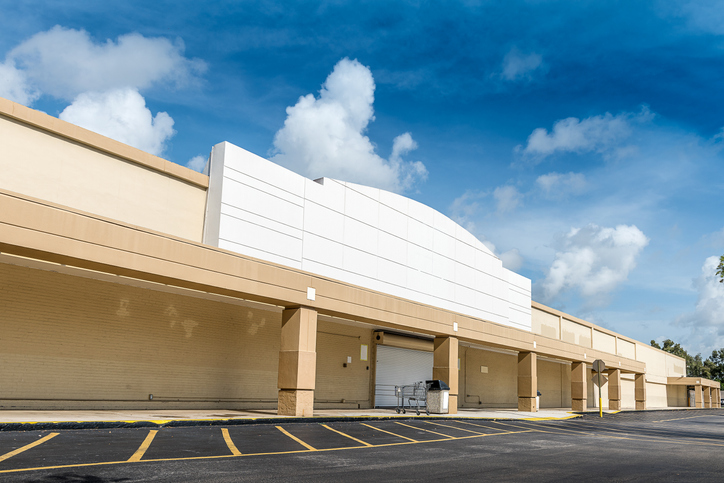Editor’s note: Ellie Garabedian is senior sales executive at market research firm Euromonitor International, Chicago. This is an edited version of a post that originally appeared under the title, “Leveraging market research to retain tenants and increase foot traffic.”
It’s no secret the retail environment is changing rapidly. Euromonitor International forecasts e-commerce to be the fastest growing channel in the world over the next five years. According to Euromonitor’s 2018 retailing forecast figures, e-commerce is expected to grow 77 percent over the next five years (2018-2023) globally vs. global brick-and-mortar retailing expecting 8 percent total growth in the next five years.

The slow growth for store-based retailing is particularly evident for traditional retailers. Many players across physical retail channels have avoided widespread store closures and found success in utilizing new and creative strategies to bring customers in-store and effectively increase in-store spend. How is this trend impacting real estate firms that develop, manage and lease their storefront properties? The following will address four ways firms can leverage market research to navigate the changing landscape and draw clients and customers to their storefronts.
Prioritize countries and get a first look at the retail environment
When evaluating a market for development, market research can be an excellent source for retail real estate firms to understand the current retail environment. Although e-commerce is set to grow more quickly than brick-and-mortar retailing, this trend does not mean the value of in-store retail is declining. In fact, the retail value of brick and mortar retailing in North America in 2018 is expected to come in just under $3 trillion according to Euromonitor International.
However, it is becoming increasingly important to think about the retail market in more than just value terms. Real estate firms must consider the market dynamics in terms of selling space and number of store outlets. Indeed, the actual selling space is set to decrease in the next five years in the North American market. To effectively allocate investments for new and existing property, it is essential that your company is aware of the future state of the market in terms of value, demand for physical space and number of outlets.
Prioritize industry segments and retail types
Retail real estate firms should not only think about tenants but recognize and adapt to changes in consumer shopping behavior. To effectively build a strategic and successful tenant mix, it is essential to understand what products and purchases are driving consumers in-store and through which retail channel types these purchases are made. This allows a firm to analyze the demand in the value of product types and understand the channel type through which these products are being purchased. Analyzing how consumers prefer to research, shop and interact with products before in-person purchases can provide context for growth for real estate firms looking at potential tenants.
Relying on market research during the planning stage can be a crucial step in narrowing the types of tenants you want to select for maximizing your retail space. Department stores have struggled to gain traction and been unable to produce year-over-year growth in the North American market, putting pressure on the companies that lease these properties. With the combination of retail and consumer product data, real estate firms leasing space to large retailers can discover why there’s been a lack of growth and identify where consumers are buying products instead. Using store-type growth trends in combination with analysis on what products have been in high demand will empower you with a clear strategic plan for success moving forward.
What companies and brands should you target?
After evaluating retail types and product categories for growth, real estate firms will want to understand the retailers and brands winning in the market. In-depth company profiles give you a look into a retailer’s strategy, market opportunities and competitive environment. Additionally, access to market share data by channel type will help you recognize smaller players that are gaining share from the top players in the market.
 Although it can be easy to look at the market purely from the perspective of what retailers have the highest market share in each channel type, there’s a need to evaluate which brands are winning in the consumer goods industry as well. By creating an omnichannel experience that allows consumers to interact with brands across various channels, you can see digitally native brands experiment with smaller format store-based retail models such as pop-up shops. This trend is notably observed in the beauty industry with companies like Kylie Cosmetics and Glossier opening pop-up shops. Larger retailers and brands should leverage trends like these to continue to drive foot traffic.
Although it can be easy to look at the market purely from the perspective of what retailers have the highest market share in each channel type, there’s a need to evaluate which brands are winning in the consumer goods industry as well. By creating an omnichannel experience that allows consumers to interact with brands across various channels, you can see digitally native brands experiment with smaller format store-based retail models such as pop-up shops. This trend is notably observed in the beauty industry with companies like Kylie Cosmetics and Glossier opening pop-up shops. Larger retailers and brands should leverage trends like these to continue to drive foot traffic.
Understand new concepts and innovative retail formats
The most successful retailers and companies adapt to the changing retail environment by creating opportunities for consumers to engage with their brand in new ways. Firms can do this by providing insight on consumer trends that are changing the consumer path-to-purchase journey, customer service expectations and innovative retail formats.
Leveraging market research across consumer goods industries and services will create an opportunity to understand innovative retail strategies to bring to your locations. For example, by looking outside of the retail sector, you could analyze and quantify how hybridizing consumer food service and retail would increase customer foot traffic; or leverage research to evaluate how the latest retail-entertainment formats serve as an added value to your clients and their target consumers. Having these insights will allow your firm to create an environment that supports omnichannel initiatives, innovation, growth and repeat consumers.
In summary, it is critical real estate firms are leveraging strategic knowledge on retail industry, consumer goods industries and the end consumers in order to plan properties and tenant mix that will provide value to their clients and ultimately drive consumers to their locations.
